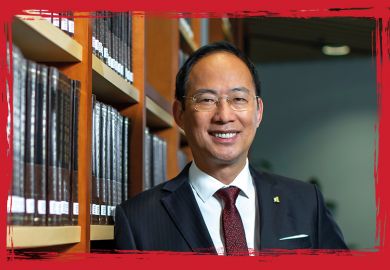Education providers must not underestimate the after-effects of coronavirus disruption on the “next wave” of international students, an Australian forum has heard.
Jon Chew, head of analytics with global education provider Navitas, said students from some parts of the world had effectively lost two years of schooling.
“Even when there was remote learning, lots of young people didn’t have access,” Mr Chew told the Association of Australian Education Representatives in India. “A lot had normal schooling for about 5 per cent of the last year. Not only were they missing out on learning, but they forgot a lot of what they had learned in previous years. The disruption has been profound. This is a significant challenge right around the world.”
A McKinsey analysis has found that students from south Asia and Latin America, the regions most affected by school closures, have experienced average delays of a year in their academic preparation. “The international students that come to Australia…are different from previous generations of international students,” Mr Chew said.
“They will have greater needs around perhaps their English proficiency. They might not be as advanced in mathematics as they would have been previously. Their social skills, their mental health – lots of issues.”
The World Bank has estimated that Covid-19 school closures will cost current students up to $17 trillion (£15.2 trillion) in lifetime earnings. Mr Chew said this would leave some promising students resigned to “aim lower” in life.
“That’s a very sad option,” he said. “You can picture a young person doing really well in schooling on the way perhaps to a law-commerce double degree. Along comes Covid. They’re knocked off course, learning from their bedroom. They’re anywhere from three to six to 12 months behind where they should be. What do they now do? Do they say: ’I can’t do law-commerce. Maybe I just do commerce?’”
Another option was to find an institution prepared to lower its entry standards in view of the student’s disrupted schooling. “This can be a double-edged sword,” Mr Chew said. “The course is still as hard as it was. If there isn’t the additional support, the additional mental health services, then we’re not necessarily doing students a favour by lowering the entry requirements.”
A third option was to enrol with a pathway provider. Mr Chew conceded that this suggestion could sound “self-serving”, given that Navitas operates pathway colleges, but he said there were many others.
“This is what the pathway colleges are for,” he said. “They look at the individual. Maybe you got distracted by a girlfriend in the final year of high school; maybe you had teachers that you didn’t get along with. But we recognise your potential, and we think that you’ll thrive at university. Here’s a pathway programme that will help you catch up to your full potential.”
Mr Chew said agents had a huge role to play in helping the new wave of students navigate the options. “All of the sensitivity you have, all the personalisation you do, your counselling, your individual treatment – all of that will be more important than ever, as we help this next generation catch up from the last two years of disruption.”






